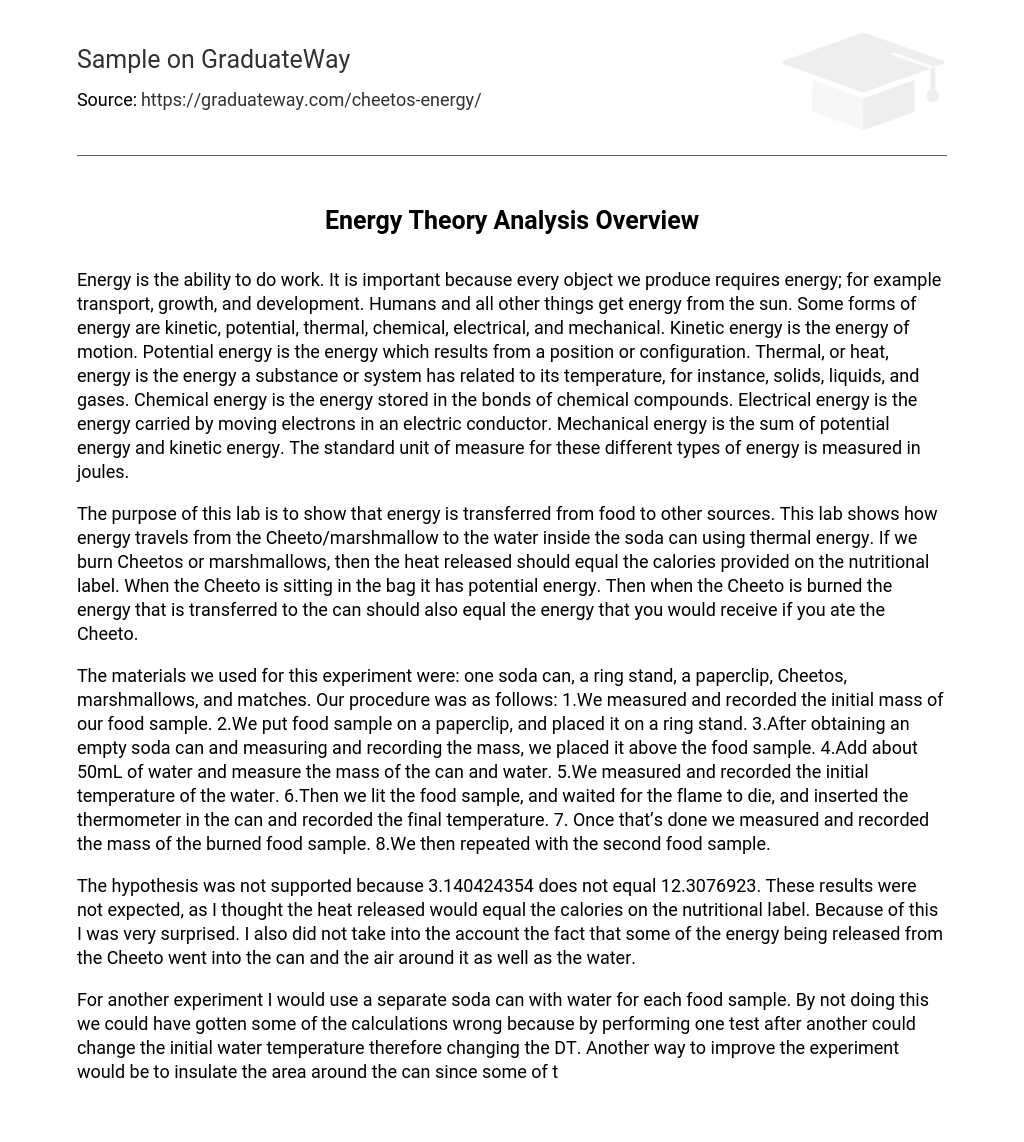Energy is essential for various activities like transportation, growth, and development. All living organisms, including humans, obtain energy from the sun. There are different types of energy: kinetic, potential, thermal, chemical, electrical, and mechanical. Kinetic energy relates to movement while potential energy depends on an object’s position or arrangement. Thermal energy refers to heat in solids, liquids, and gases. Chemical energy is stored in the bonds of chemical compounds. Electrical energy comes from the movement of electrons within a conductor. Mechanical energy combines both potential and kinetic energies. The unit used to measure all these forms of energy is joules.
The purpose of this lab is to demonstrate the transfer of energy from food to other sources. Specifically, it highlights how thermal energy facilitates the transfer of energy from a Cheeto or marshmallow to water inside a soda can. The hypothesis proposes that the heat emitted during the burning process of the Cheeto or marshmallow should correspond to the calories indicated on its nutritional label. Initially, while still in the bag, the Cheeto possesses potential energy. However, once burned, the transferred energy to the can should be equivalent to the energy obtained through consumption.
The experiment utilized several materials including a soda can, a ring stand, a paperclip, Cheetos, marshmallows, and matches. The procedure began with measuring and recording the initial mass of the food sample. Next, the food sample was placed on a paperclip which was positioned on a ring stand. The mass of an empty soda can was measured and recorded before placing it above the food sample. Around 50mL of water was added and the mass of the can and water was measured. The initial temperature of the water was also recorded. The food sample was then lit and the flame allowed to extinguish before inserting a thermometer into the can to record the final temperature. The mass of the burned food sample was measured and recorded. This process was repeated with a second food sample.
The hypothesis was unsupported as the numerical value of 3.140424354 is not equivalent to 12.3076923. Surprisingly, these findings contradicted my expectations that the amount of heat released would match the calories mentioned on the nutritional label. Furthermore, I failed to consider that a portion of the energy released from the Cheeto dispersed into the surrounding air, water, and the container it was in.
For optimal accuracy, a separate soda can filled with water should be used for each food sample in future experiments. Failing to do so may have resulted in incorrect calculations due to the potential alteration of the initial water temperature during consecutive tests, thus affecting the change in temperature (DT). Additionally, insulating the surrounding area of the can would be beneficial as some of the energy emitted from the food sample might be dissipated into the atmosphere.





